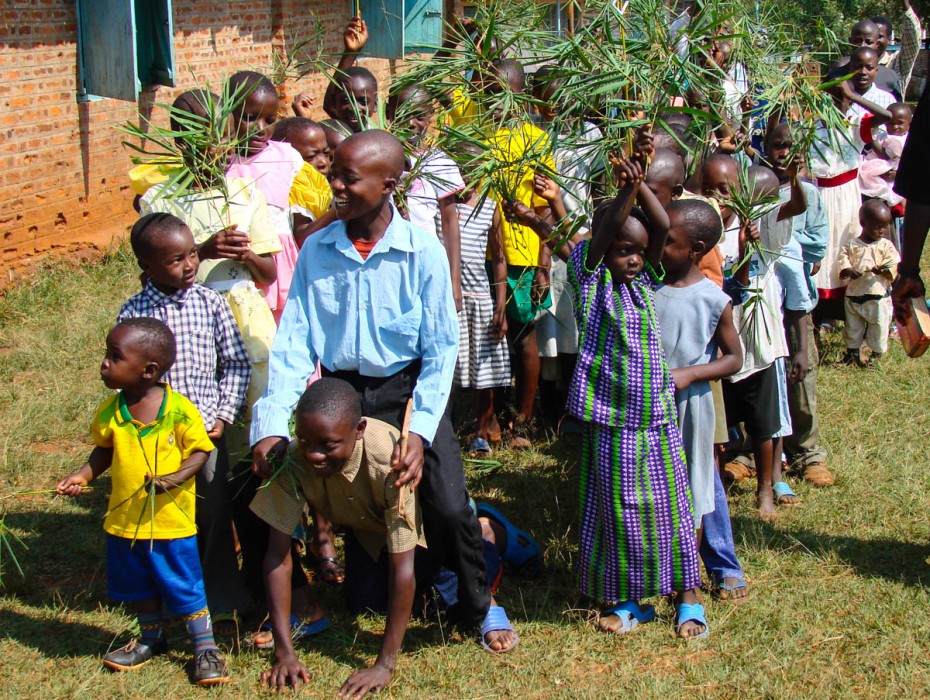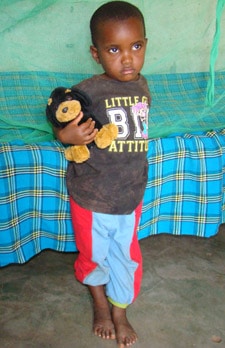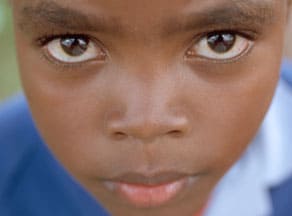Easter in Kenya

It’s dawn in the village of Burendwa, western Kenya. On a chilly Sunday morning, children wake up anxiously as they wait for their mothers to prepare breakfast. Sebastian rubs his eyes and rises from his bed.
It’s Easter Sunday and all children, youth, women and men are eagerly waiting to go to church and celebrate the resurrection of Jesus Christ. As Sebastian washes his face he hums,
“He is risen!”
“He is risen!”
“And He lives, forever more.”
Suddenly he hears other children in his village and realizes he is late. He quickly puts on his best suit and leaves for church.
The sun’s rays can be seen rising from the east; there is excitement on everyone’s faces. Some women are balancing pots full of water on their heads with a lot of prowess. Some are heard talking in loud tones about the day’s events. Mama Sebastian says to her family,
“Kweli hi itakuwa siku njema tukila na tukisherekea kufufuka kwake Yesu Mwokozi Kristo!”
Translation:
Continue Reading ›“This is going to be a great day as we eat together and celebrate the resurrection of Jesus Christ our Savior!”
Counting Malaria Out
At the center of Riaciina village in Kenya lies a semi-permanent house, traditionally constructed. The walls of the house are made of mud and smoothly smeared with cow dung. The roof is thatched with iron sheets. There is a big gap between the mud and iron sheets. Mosquitoes penetrate freely day and night. 
This is the home of Amina, a toddler enrolled in the local Child Survival Program (CSP). At the back of the homestead lies waste from the nearby kitchen. On the other side of the home are thick bushes of indigenous trees.
As the CSP specialist visited the mother, mosquito bites could be noted on the face of the child. Throughout the session, the TEEEE! TEEEE! sound of mosquitoes could be heard.
In some countries, mosquitoes are just nuisance, but in Riaciina, mosquitoes pose a deadly threat. Mosquito-borne malaria is the major killer disease in the area.
Riaciina village lies in the semi-arid part of Kenya on the extreme southern slopes of the largest mountain in Kenya, Mount Kirinyaga. The occupants are mainly the Ambeere and the Akaamba people whose primary work is farming and fishing. (more…)
Continue Reading ›People Living With HIV or AIDS
Sitting in the humid air inside a tent, listening to the palm leaves sway and the support poles creak, and with her hand clasped on her cheek, Zainabu can still hear the words ringing in her head:
“You have been tested positive for human immunodeficiency virus (HIV), the micro-organism that causes the acquired immunodeficiency syndrome (AIDS).”
When the doctor announced the results, a mood of gloom and despair descended on Zainabu. She did not know where to go or what to do.
“It seemed like my life and the livelihood of my children had been cut, since they all depended on me.”
Looking for a shoulder to cry on, Zainabu wondered whom to inform or talk to. Her family and the community had no place for HIV-positive people. “I am an abomination,” Zainabu thought to herself.
Risks Remain Large for Kenyan Children
While the East African nation of Kenya does not grab as many headlines as its less stable neighbors to the west, disease, malnourishment and violence are leaving a mark on this generation of Kenyan children.
 About 500,000 Kenyan children are missing school due to lack of food.
About 500,000 Kenyan children are missing school due to lack of food.
According to the World Food Program, in countries where school attendance is low, the promise of at least one nutritious meal each day boosts enrollment and promotes regular attendance. Where that is not offered, hunger interferes with the children’s concentration in class, affecting class performance. As famine takes its toll across the country, a growing number of students are staying away from school altogether to help their parents look for food (The Standard, Sept. 23, 2009).
Drought and famine have led to an increase in the high school dropout rate primarily in schools in the Njoro and Nakuru areas. While 29 percent of children in Nairobi are malnourished, that number increases to 42 percent in the Eastern Province (Daily Nation, Oct. 7, 2009).
The United Nations Scientific and Cultural Organization (UNESCO) has stated that malnutrition is the major barrier to universal primary education in Kenya.
Famine conditions have also affected livestock in the rural areas of Kenya, undermining the primary source of income for pastoralists, especially the Maasai population. (more…)
Benson’s New Classroom
Benson wakes up at 6:00 a.m. every Saturday excited that he will see his friends and learn Bible lessons. On this particular Saturday, the children at his child development center learn a life-lesson, and child development director, Mercy, takes them through the devotion.
It’s chilly and the teacher starts the lesson. As drum beats fill the air, children fill with excitement — the right mood for a story.
Teacher Mercy starts,
“Once upon a time there were two buckets that hung by the Simenya Well. They kept on being drawn by the residents of Simenya. One late afternoon, tired with the day’s work, they took time to rest and spoke to each other.”
At this point Teacher Mercy coughs and holds two buckets as visual aid while pointing them to the children.
In the background, one hears a symphony of coughs and sneezes from the children because of the weather. Her “classroom” is outside.
She continues,
“One of the buckets was always grumbling. It never looked at life cheerfully. On this particular day, as it rested outside the well it said to the other bucket, ‘I am tired of the life we lead. However full we are when we are drawn up out of the well, we are sent back empty again. This makes me disappointed and dissatisfied.’
The second bucket looked at life differently. It did not grumble because it looked at the positive side of life. It said, ‘That’s true, but I always look at it this way — that however empty we are when we are set down, we are always full when draw up.'”
Teacher Mercy declares the end of the story, looks at the children, sees the cloudy skies, and whispers a prayer to God, “Please Lord, help us build classrooms to house these children.”
For the last three years, trees randomly placed in the Simenya Child Development Center church compound have been serving as “classrooms” for the children. Unfortunately the days can be nightmares for some of the children in the center, especially when they come to the wall-less classrooms, during extreme weather conditions.
According to Mercy,
“The long rainy seasons fall in March to May, while the short rainy seasons are during the months of August to September and sometimes trickle into October.
These are dreaded months by children, teachers and parents alike. One is likely to meet children shivering in the chilly days with hands tightly clasped across their chest, to preserve the little body temperature.
It is during this period, we have seen children affected by periodic fever. These are the times when we see children walk out of class or even stay away from the classes, with parents citing fear of fever attack.”
During the hot season months, we have not been spared either. This area has characteristic dry spells, which leaves the indigenous trees without leaves. Scorching sunbeams through the sketchy branches penetrate the out-door classes. Because of this, Simenya Child Development Center has made numerous efforts to address this immense challenge.


